Table of Contents |
This lesson covers artwork from 1905 to 1913. You will explore artwork from Paris, France, where the Fauvists revealed their new works of art at the Autumn Salon of 1905. You will also learn about artwork from Dresden, Germany—home of the Expressionist group Die Brücke. Finally, you will see artwork from Munich, Germany—home of The Blue Rider, another Expressionist group.
Henri Matisse’s work was unique for many reasons, but his experimentation with forms of painting is largely unequaled. His visual style was broad, which had as much to do with his provincial upbringing as it did with his academic training. In time, his experimentations led him to develop a style that was negatively dubbed “Fauvist,” or wild beast, by critics because of its unorthodox painterly approach to color application, depictions of space, and appearance of brushstrokes.
Similar to the Impressionists, Fauvists, or followers of Fauvism, embraced their initially critical title. Matisse’s work within this genre of painting was incredibly influential and was largely credited with the development of the Expressionist style that spread throughout Europe in the early 20th century. This contributed to Matisse’s widely held reputation among art historians as one of the most important, if not the most important, French painter of the 20th century.
EXAMPLE
Below is a painting of Matisse’s wife, La Femme au Chapeau (Woman With a Hat):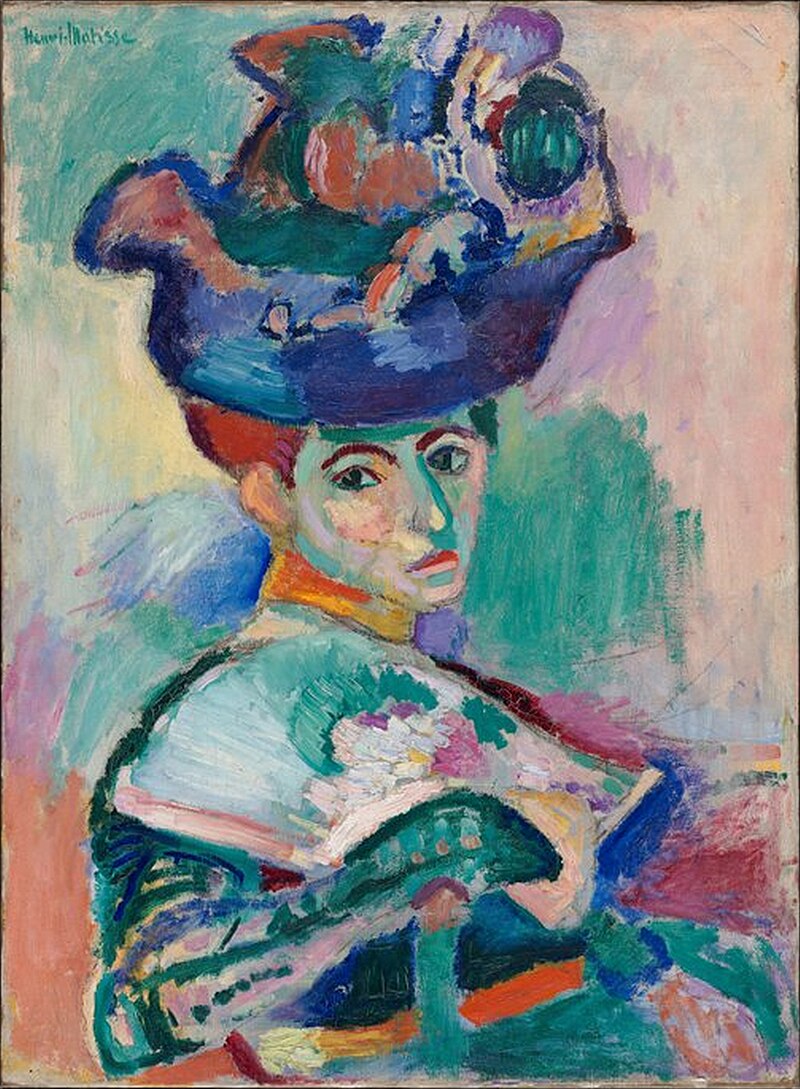
Woman With a Hat, along with several other works in a similar style, was exhibited at the Autumn Salon of 1905 in Paris, where it was met with strong criticism. Despite the initial backlash, this painting represents a significant shift in Matisse’s artistic approach. He began to prioritize color and brushstrokes, drawing inspiration from the Impressionists and Post-Impressionists before him. Matisse, however, used these elements to convey human emotion from his distinct perspective.
This technique marks a departure from the Impressionists’ approach, where color and brushstrokes were used to capture the observable effects of light. While Impressionists were driven by external observations, Expressionists like Matisse were motivated by internal emotions and subjective experiences.
The second painting by Matisse is also of his wife, and it is another example of his use of color to define features and evoke feelings.
EXAMPLE
Below is Portrait of Madame Matisse, originally titled La Raie Verte or The Green Stripe.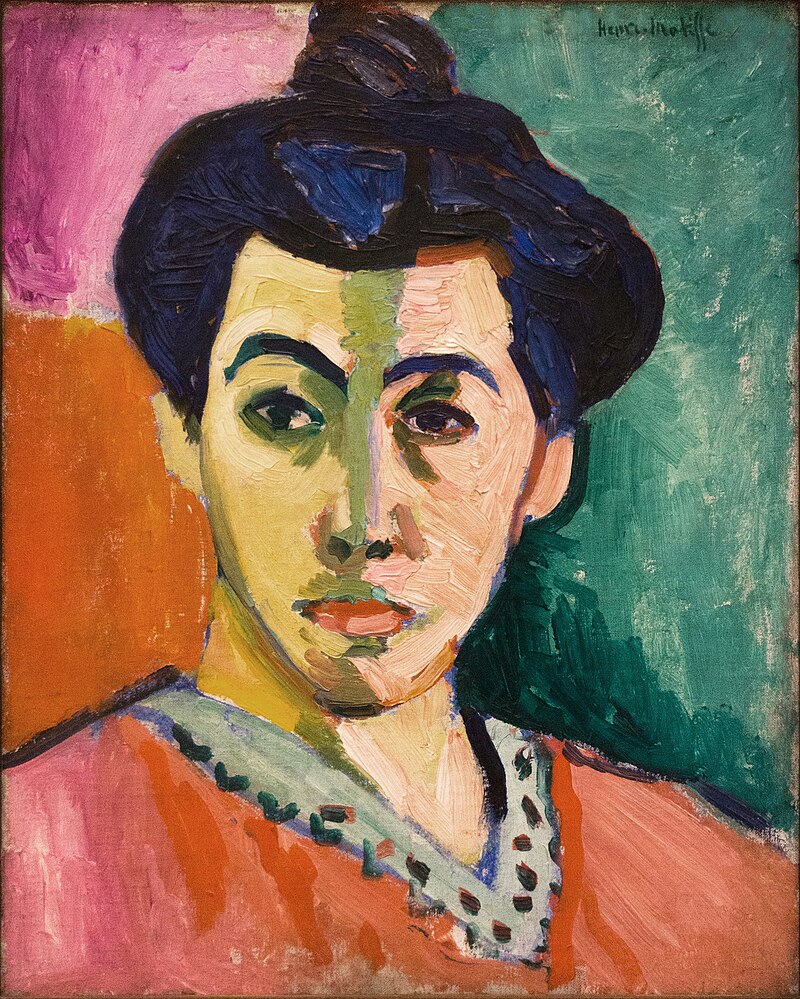
Notice the flatness in the Portrait of Madame Matisse, which recalls the works of Cézanne and Gauguin. A green stripe down the middle of her face breaks the form into two sides: one cooler and the other warmer. Rather than play with color value, as one would in a realistic portrait, Matisse substitutes the colors outright. He doesn’t use a naturalistic palette because this isn’t an interpretation of what he sees but rather his interpretation of the emotion being projected.
Fauvism placed a strong emphasis on color as a form of personal expression—it was a vehicle for communicating the artist’s emotional response to the world around them, rather than a mere visual reproduction. This philosophy contributed to the broader Modernist emphasis on subjectivity in art.
In Germany, two Expressionist groups formed within about 5 years of each other and shared the common goal of expression in art, but each emphasized different areas. These two groups were as follows:
This painting by Kirchner, titled Street, Dresden, exemplifies the kind of subjects that artists from Die Brücke often explored.
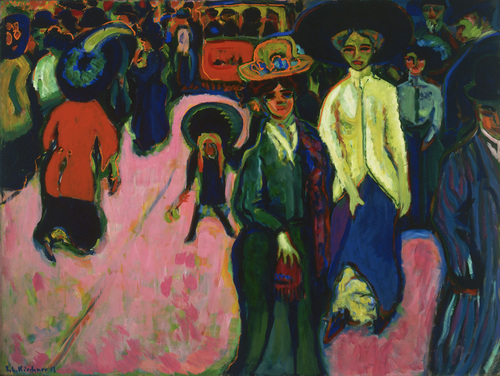
Street, Dresden
Museum of Modern Art, New York
1908 (reworked in 1919; dated on painting 1907)
Oil on canvas
The name “Die Brücke” (“The Bridge”) signifies the artists’ intention to create a connection between the artistic past and the future. Members of this group adopted a Bohemian lifestyle, viewing it as a distinct departure from the conventional norms of the bourgeoisie. They showed a keen interest in Primitivism, drawing inspiration from Oceanic art and German folk art, and often traveled to remote areas of Germany for retreats.
In their revival of the woodcut technique, these artists emphasized rough, broad lines, intentionally showcasing these elements rather than smoothing them over, which added a raw energy to their work. In this painting by Kirchner entitled Street, Dresden, the use of vibrant colors and bold forms conveys the themes of anxiety and tension, reflecting the alienating experience of modern urban life. The technique proves impactful as the painting portrays a crowded yet impersonal city scene where, despite the presence of many figures, there is a noticeable lack of intimacy or interaction among them. This lack of connection among the figures enhances the sense of isolation and disconnection, embodying the negative aspects of city life.
EXAMPLE
Compare the above painting with this painting of the city by Renoir: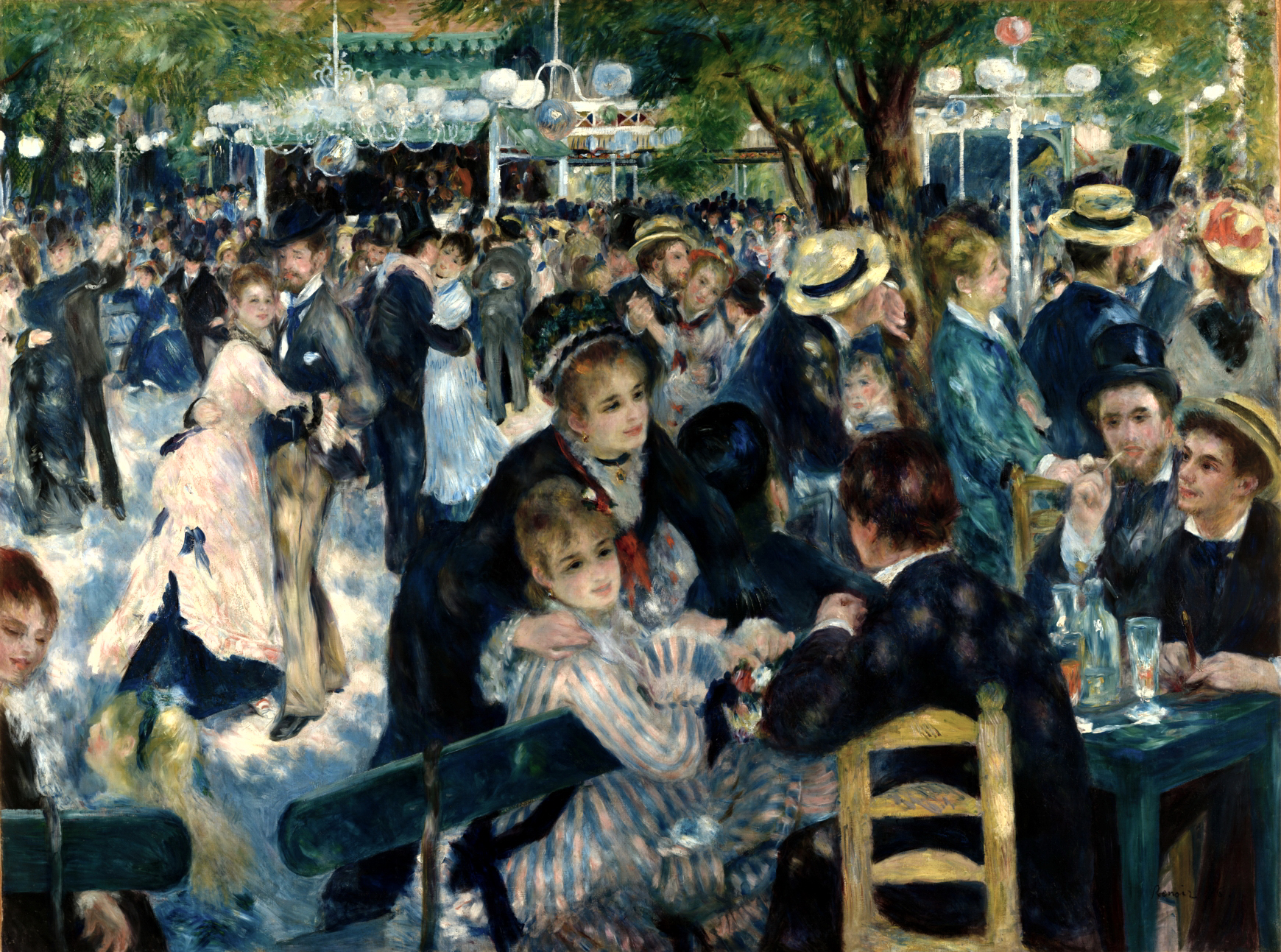
While depicting different cities, the contrast between the two paintings is stark. Renoir’s work radiates joy and companionship, whereas Kirchner’s painting communicates a sense of isolation. Both paintings show people in close proximity, yet Kirchner’s approach intentionally presents a more subdued and hollow atmosphere, emphasizing the stark differences in the emotional experiences conveyed by each artist.
Franz Marc and Wassily Kandinsky were cofounders of the group that came to be known as The Blue Rider, purportedly named from a 1903 Kandinsky painting of the same title. Like Kandinsky, Marc was a spiritual person. His paintings of the early 20th century were predominantly of animals, which he felt were spiritually closer to nature.
EXAMPLE
Below is a painting by Fraz Marc entitled Fate of the Animals.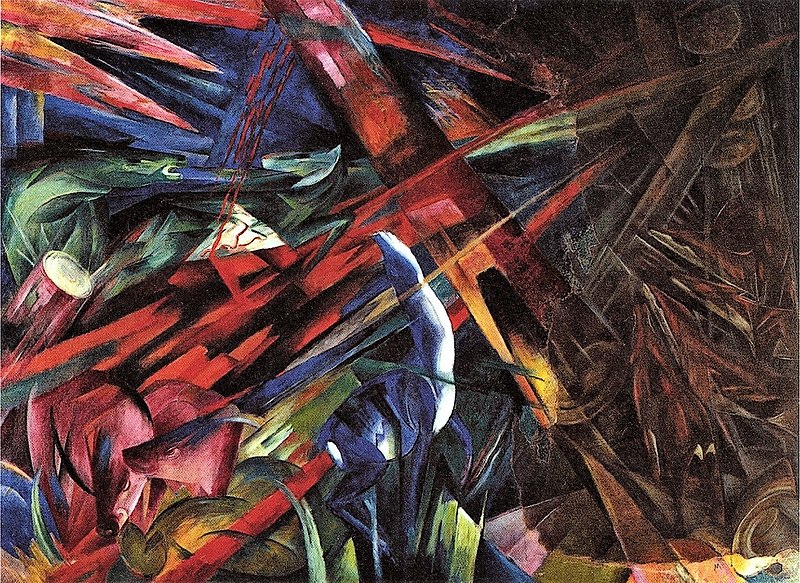
Fate of the Animals is an apocalyptic vision that reflects Marc’s growing anxiety about the state of the world. The painting depicts a forest in violent disarray, with animals and trees fragmented in a chaotic, cataclysmic scene. This representation can be seen as a premonition of the destruction and suffering of World War I, which began shortly after the painting was completed.
Marc was known for his symbolic use of color and his interest in portraying the emotional and spiritual life of animals. In this painting, the use of sharp colors and bold lines conveys a sense of urgency and turmoil. Marc assigns colors symbolic meanings—blue for masculinity and spirituality, yellow for feminine joy, and red for violence and war—which intertwine to narrate the tragic fate of the natural world. By portraying animals caught in a devastating storm of color and form, Marc comments on the broader existential threats posed by human conflict and environmental disregard.
This shift is evident in his visual style and the sharp geometric shards, inspired by Cubism, that separate and isolate the animals represented in the picture. This new style replaced the more tranquil and communal imagery from Marc’s earlier painting. Fate of Animals is an example of this shift and is likely Marc’s most famous painting.
Wassily Kandinsky’s artwork is infused with a sense of positivity and optimism that many find captivating. Renowned as one of the pioneers of pure abstraction in painting, Kandinsky’s work transcends traditional forms to explore deeper spiritual and metaphysical themes. His spiritual inclinations deeply influenced his artistic philosophy; he aimed to capture internal experiences rather than mere external realities, believing that his art could serve as a catalyst for heightened spiritual consciousness in viewers
Furthermore, Kandinsky’s work delves into the intersection of visual art and music, reflecting his innovative approach to synthesis across sensory experiences. He is believed to have experienced synesthesia, a condition where sensory pathways overlap, allowing him to perceive colors when he heard music and vice versa. For example, when Kandinksy saw light blue, he heard flutes. When he saw dark blue, he heard cellos. This unique sensory capability enriched his art, enabling him to create visual representations of musical compositions, thereby offering a multisensory experience that was groundbreaking in the realm of visual arts. This exploration of synesthesia not only set his work apart but also contributed significantly to the development of abstract art, making his contributions invaluable to the progressive spirit of modern art. }}
This condition of synesthesia may explain his affinity for Expressionism and his naming scheme for his paintings, which refer to classical music and use words like “composition” and “improvisation.” These open-ended and vague titles also detach the artworks from any objective descriptions. This allows the viewer to interpret the image without any identifying guidance from the artist.
EXAMPLE
Kandinsky’s painting Improvisation 28 (Second Version) was considered by Kandinsky himself to be his first purely abstract work of art.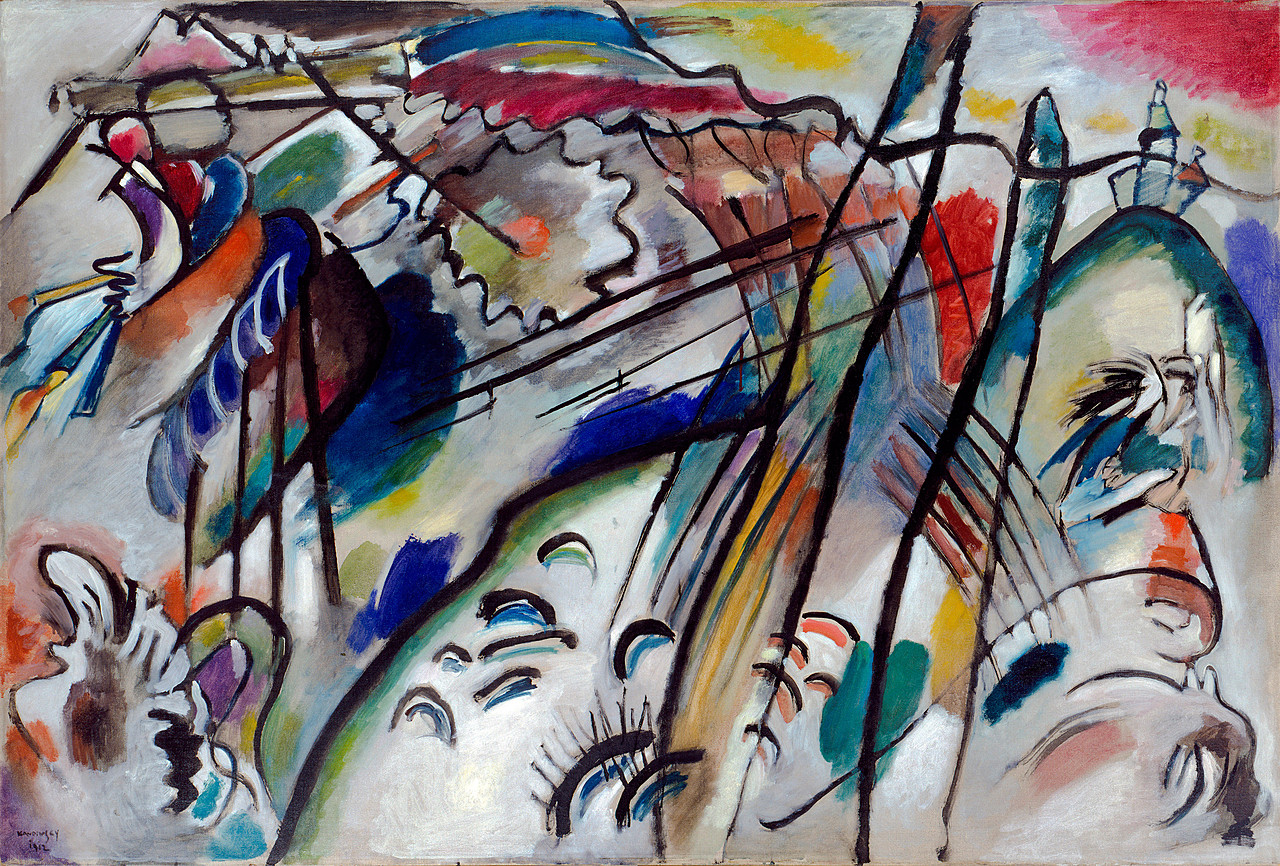
Kandinsky believed that colors and shapes had the power to elicit spiritual vibrations in the viewer. Improvisation 28 (Second Version) exemplifies this belief, using dynamic, swirling forms and a vivid palette to evoke deep emotional responses. Kandinsky saw his improvisations as expressions of his inner life, akin to how a musician uses improvisation in music. This work not only advanced the field of abstract art but also influenced numerous other artists and movements. Kandinsky’s abstract works laid foundational concepts for later developments in modern art, including Abstract Expressionism, where artists like Jackson Pollock and Mark Rothko would further explore abstraction and emotional expression.
Source: THIS TUTORIAL WAS AUTHORED BY IAN MCCONNELL AND TAMORA KOWALSKI FOR SOPHIA LEARNING. PLEASE SEE OUR TERMS OF USE.